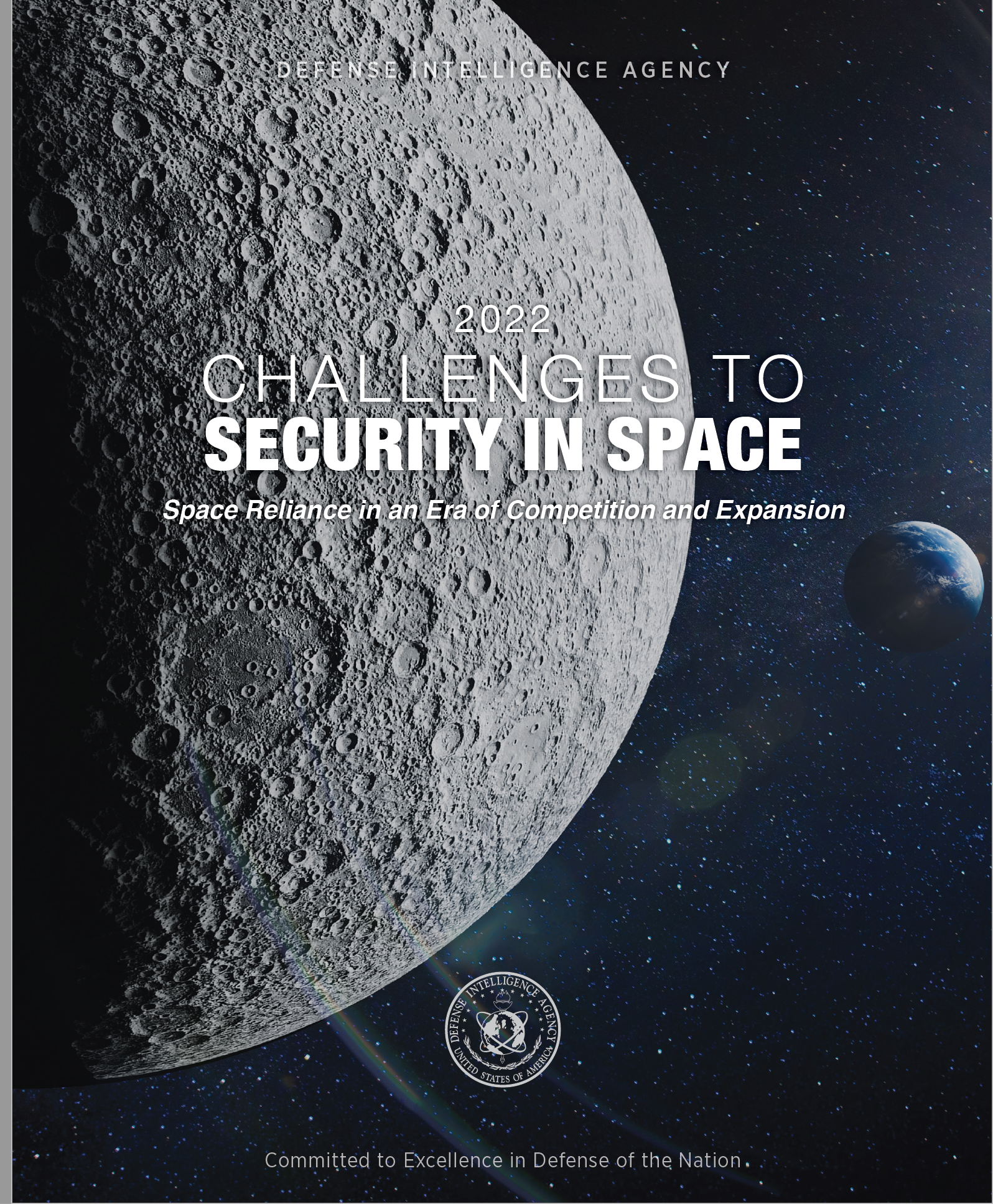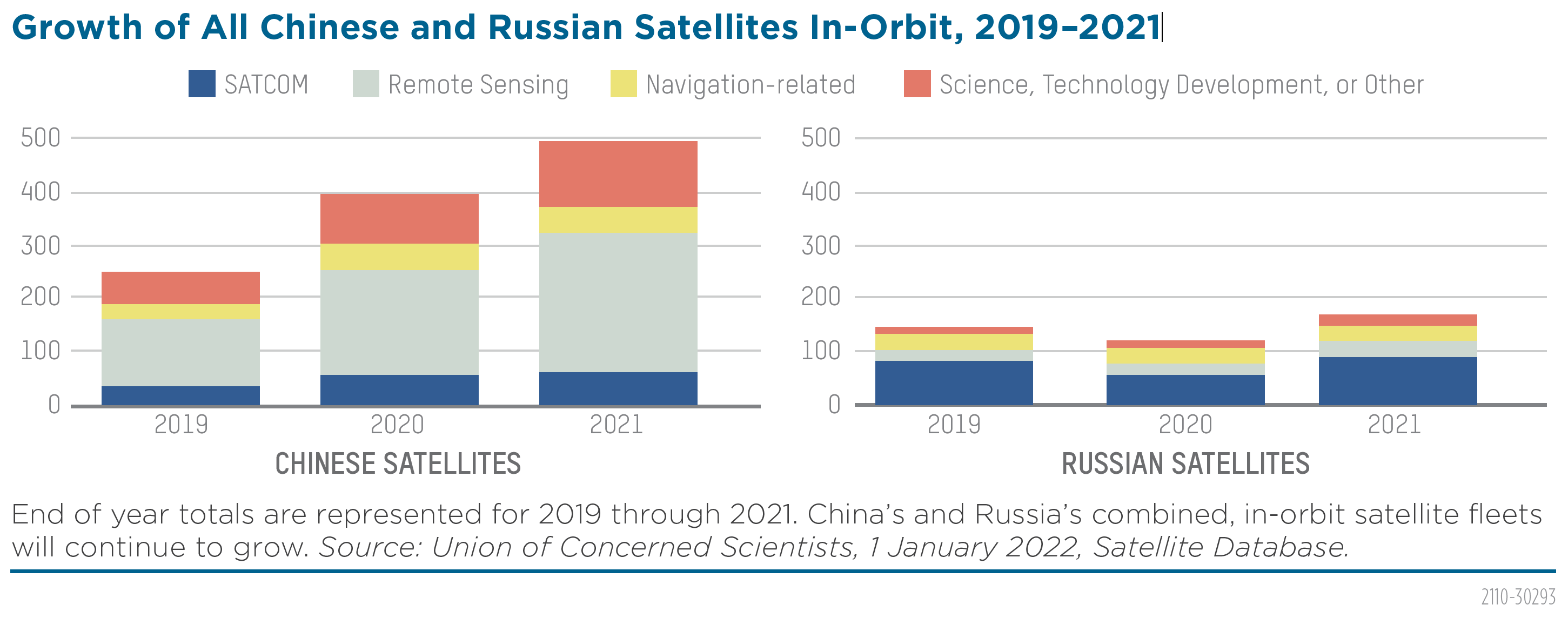
Challenges to Security in Space was first published in early 2019 to address the main threats to the array of U.S. space capabilities, and examine space and counterspace strategies and systems pursued primarily by China and Russia and, to a lesser extent, by North Korea and Iran. This second edition builds on that work and provides an updated, unclassified overview of the threats to U.S. space capabilities, particularly from China and Russia, as those threats continue to expand.
Exhibit: “Growth of All Chinese and Russian Satellites In-Orbit, 2019–2021”
Between 2019 and 2021 the combined operational space fleets of China and Russia have grown by approximately 70 percent. This recent and continuing expansion follows a period of growth (2015–2018) where China and Russia had increased their combined satellite fleets by more than 200 percent. The drive to modernize and increase capabilities for both countries is reflected in nearly all major space categories—satellite communications (SATCOM), remote sensing, navigation-related, and science and technology demonstration.
Since early 2019, competitor space operations have also increased in pace and scope worldwide, China’s and Russia’s counterspace developments continue to mature, global space services proliferate, and orbital congestion has increased. As a result, DIA has published this new edition to:Expand its examination of competitor space situational awareness (SSA), and command and
control (C2) capabilities;Detail the profiles of organizations operating space and counterspace systems based on new information;
Deepen our characterization of new space and counterspace systems deployed and in development;
Focus on China’s and Russia’s interests in exploring the Moon and Mars;
Provide a new section on the use of space beyond Earth orbit and its implications;
Widen our treatment on the threats posed to all nations’ space operations from space debris.

No comments:
Post a Comment